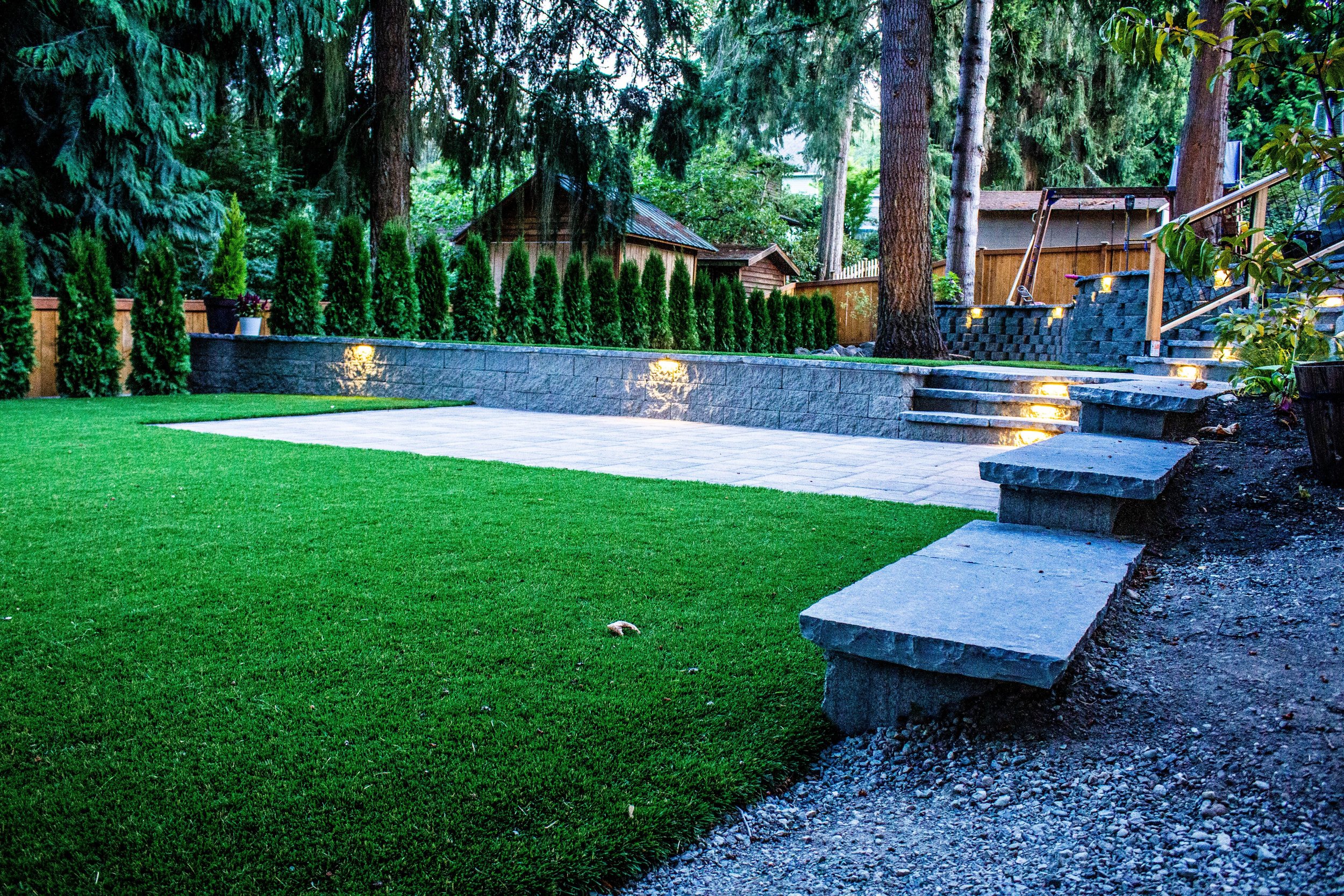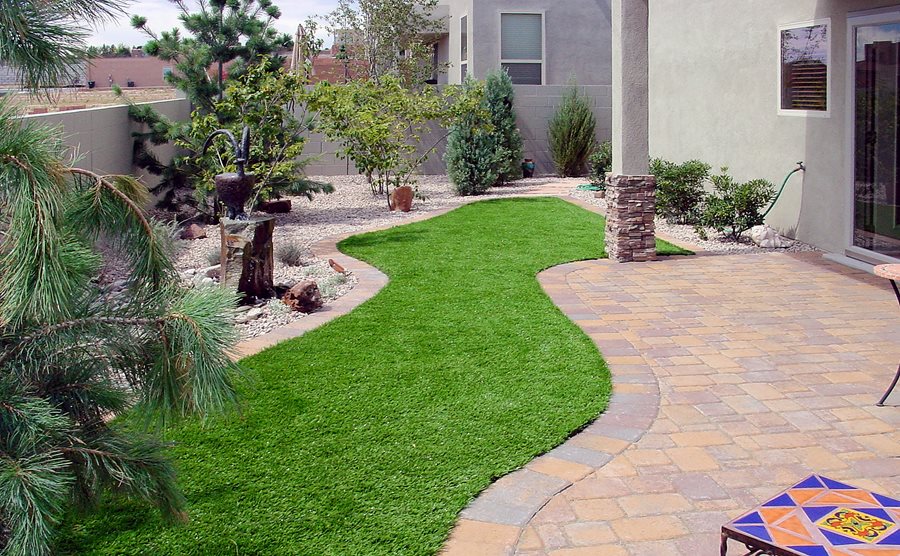Delve Into the Environmental Advantages of Opting for Artificial Turf Solutions
The adoption of synthetic grass solutions offers an engaging opportunity to resolve pressing environmental challenges. By substantially decreasing water use and minimizing the application of damaging chemicals, these alternatives not just promote lasting landscape design but additionally secure regional communities. The lower carbon footprint connected with decreased upkeep tasks adds to a more sustainable strategy to land administration. The ramifications of these benefits expand beyond simple preservation efforts, elevating questions regarding their lasting impact on environment preservation and general environmental equilibrium. Exploring these measurements discloses a complex interplay worth taking into consideration.
Water Conservation Advantages
One of the most considerable benefits of synthetic grass is its capability to preserve water. Traditional grass yards call for significant watering, specifically in locations vulnerable to dry spell or water restrictions. In contrast, synthetic grass does not need watering, substantially lowering the general need for water resources. This attribute is particularly beneficial in dry areas where water shortage is a pushing worry.
By eliminating the need for normal watering, synthetic grass contributes to lasting landscape practices and assists alleviate the environmental effect of extreme water consumption. Furthermore, the conservation of water includes the reduction of overflow, which can cause soil erosion and river contamination.
Additionally, the installation of fabricated lawn enables homeowners and districts to designate water sources a lot more successfully, focusing on important uses such as alcohol consumption water and agriculture. The shift towards man-made turf not just promotes liable water usage yet additionally straightens with more comprehensive environmental objectives focused on maintaining all-natural sources.
As communities increasingly prioritize sustainability, the water preservation benefits of man-made lawn present an engaging situation for its fostering in industrial and household landscaping jobs.
Lowered Chemical Use
The change to fabricated grass dramatically lowers the reliance on chemical therapies generally utilized in natural grass upkeep. Conventional grass management normally involves the application of herbicides, fertilizers, and chemicals to promote development and control insects. These chemicals can posture threats to human wellness, local wild animals, and the setting, adding to dirt and water contamination.
On the other hand, fabricated turf removes the requirement for these damaging compounds. When mounted, it calls for very little maintenance, mainly containing normal cleansing and infrequent infill replenishment. This reduction in chemical use not only benefits the prompt setting but also contributes to broader environmental security. By minimizing the launch of synthetic compounds into the environment, synthetic turf promotes healthier soil and water systems.
Moreover, the absence of chemical overflow connected with synthetic grass setups assists safeguard local rivers from contamination, sustaining marine life and maintaining biodiversity. Phoenix turf companies. As communities progressively prioritize lasting techniques, going with synthetic grass offers a feasible option that lines up with environmental conservation objectives. With this shift, residential or commercial property owners can take pleasure in lavish environment-friendly rooms without endangering eco-friendly health, leading the way for a much more lasting future
Lower Carbon Footprint

Moreover, the installment of artificial grass can result in considerable water conservation. All-natural lawns require significant amounts of water for irrigation, which not only includes to the carbon more info here impact connected with water extraction and treatment however also strains local water sources. On the other hand, synthetic grass needs marginal upkeep, needing no watering, thus significantly lowering water use and its associated power prices.
Additionally, the long life of synthetic grass adds to its decreased carbon effect. With a life-span of up to 15 years or even more, the need for constant substitutes is diminished, causing much less waste and reduced power intake in manufacturing and dealing with conventional turf alternatives. On the whole, synthetic grass offers a lasting alternative for eco aware landscape design.
Environment Preservation
Habitat conservation is a critical factor to consider in the discussion over landscape design options, particularly when contrasting man-made grass to all-natural grass. Natural turf lawns typically require extensive maintenance, consisting of making use of herbicides, plant foods, and pesticides, which can negatively impact neighborhood ecological communities. These chemicals can leach into the soil and waterways, hurting indigenous vegetation and animals and disrupting my explanation regional habitats.
In comparison, synthetic grass provides an opportunity to minimize the eco-friendly footprint of landscape design. By choosing artificial turf, homeowners can minimize the interruption of all-natural environments connected with standard grass treatment methods. Synthetic grass eliminates the demand for hazardous chemicals, consequently securing neighboring wildlife and maintaining the honesty of bordering communities. The setup of man-made turf can lead to the conversion of previous lawn locations into more biodiverse landscapes, such as pollinator gardens or indigenous plant locations, which can support neighborhood wild animals.
Ultimately, the shift to synthetic grass not only preserves water and lowers maintenance initiatives but also cultivates an extra harmonious relationship between human activities and the natural setting, advertising environment preservation at the same time.
Long-Term Sustainability
Long-lasting sustainability is an essential consider assessing the benefits of synthetic grass over traditional turf yards. One of one of the most significant benefits of artificial turf is its toughness; it can last up to 15-20 years with marginal upkeep, whereas all-natural grass calls for frequent reseeding and substitute. This long life lowers the demand for consistent sources, such as water, fertilizers, and chemicals, which are important for keeping a healthy and balanced grass yard.
In addition, synthetic grass adds to a decrease in carbon discharges related to grass treatment devices. Standard yards frequently call for gas-powered mowers, leaners, and blowers, every one of which add to air contamination. Artificial turf companies phoenix. In comparison, artificial grass gets rid of the need for such equipment, promoting a cleaner environment
Furthermore, the production of man-made lawn significantly utilizes recycled materials, enhancing its sustainability profile. As makers take on try these out environmentally friendly methods, the ecological impact of synthetic grass remains to reduce.

Final Thought
The adoption of fabricated grass solutions presents significant ecological benefits, including substantial water conservation, decreased dependence on dangerous chemicals, and a lower carbon impact. Moreover, synthetic grass aids in maintaining natural environments by decreasing land disruption and advertising lasting sustainability through using resilient products. Jointly, these factors highlight the capacity of synthetic turf to contribute favorably to ecological health and provide a viable option to typical landscape design techniques in a significantly resource-conscious world.
In contrast, synthetic lawn does not require watering, significantly lowering the general demand for water sources. By minimizing the release of artificial substances into the ecological community, fabricated turf promotes healthier dirt and water systems.
In addition, the installation of synthetic lawn can result in substantial water conservation. In comparison, man-made turf requires marginal maintenance, needing no watering, consequently considerably minimizing water use and its associated energy expenses.
